Fantastic fall tactics
Cool weather drives heavy bass feeding, creates stellar angling opportunities
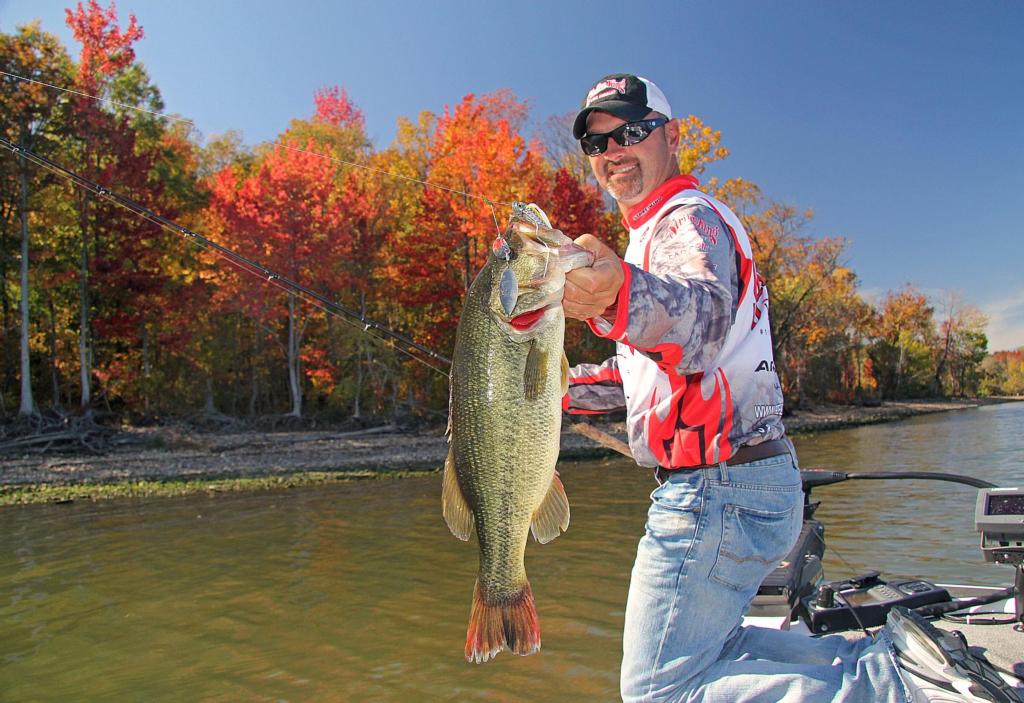
It’s never a good time to be a baitfish, but for those in the forage family, fall really is brutal. With cold weather on its way, bass are gorging on all the food they can find. Given this reality, targeting the large baitfish aggregations that occur each autumn becomes the most time-effective course toward a full belly. This creates golden opportunities for anglers who understand what to look for and what to throw.
A bass won’t turn down any crawfish that pokes his head out, but mostly the fish are chasing schools of baitfish – shad, yellow perch, alewives and the like. While bass have a singular focus, anglers have multiple ways of converting their seasonal gluttony into bent rods.
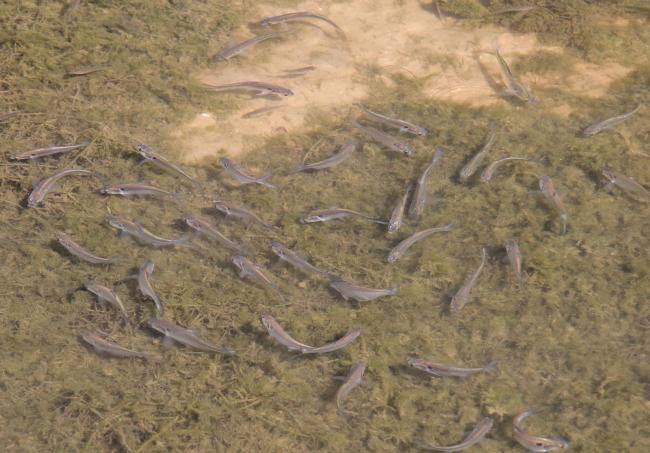 “No matter what part of the country you’re in, the bass – smallmouth and largemouth – start feeding up for the winter,” said Texas pro Stephen Johnston. “The (baitfish) group up in the fall and it’s easy prey for the bass. They can eat a lot, the baitfish give them a lot of energy and that bulks them up for the winter.”
“No matter what part of the country you’re in, the bass – smallmouth and largemouth – start feeding up for the winter,” said Texas pro Stephen Johnston. “The (baitfish) group up in the fall and it’s easy prey for the bass. They can eat a lot, the baitfish give them a lot of energy and that bulks them up for the winter.”
Indeed, from 3-inch snacks to 10-inch mouthfuls, expect to find big numbers of fall baitfish stepping up from their deeper summer haunts and moving into creeks, coves, marinas and pockets. Shad in particular – the small threadfins and the heftier gizzard variety – will gang up around everything from grass beds to docks to rocky shorelines as they munch incessantly on algae zooplankton.
The game can move quickly this time of year, so stow those drop-shots and Carolina rigs. Indeed, fall is a time for running and gunning, at least until you dial in a productive area. Moreover, you can load up your deck with rods and stand a good chance of catching fish on most of them. Consistency, though, requires a game plan; and identifying a few solid baits that you’re comfortable with usually delivers better results than straight-up junk fishing.
For planning purposes, a handful of FLW competitors helped share a rundown of their fall favorites in an effort to help anglers navigate this tricky season.
Shallow crankbait
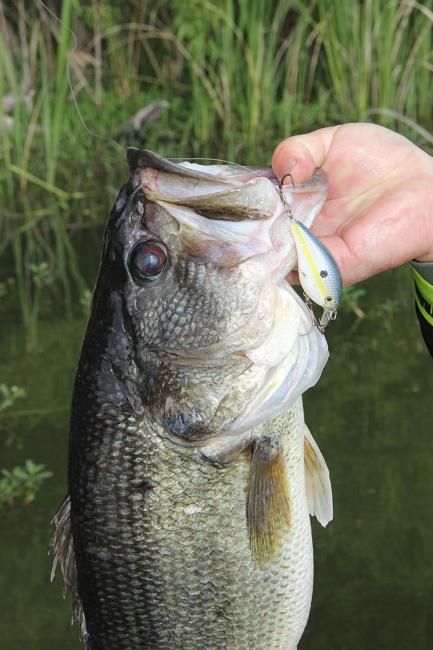 Why it works: Fall bass are on the run, so plan on covering a lot of water to find the concentrations. Gold mines will exist, but expect a lot digging first. One of the best ways to execute this technique is by burning the bank with shallow running crankbaits – either the squarebill or lipless variety.
Why it works: Fall bass are on the run, so plan on covering a lot of water to find the concentrations. Gold mines will exist, but expect a lot digging first. One of the best ways to execute this technique is by burning the bank with shallow running crankbaits – either the squarebill or lipless variety.
“The fish really key in on bait in the fall and they tend to run to the backs of creeks,” said National Guard pro Brent Ehrler. “They transition from being out in deeper water and they move up shallow and starting running bank. When they start doing that, a crankbait is a great way to catch them.”
When to throw it: Ehrler said his shallow crankbaits produce in just about any fall conditions, but he favors darker days with a moderate wind. Reaction bites generally improve as weather declines, but the fall hunger games may find bass crushing the cranks on a slick calm day with lots of sunshine.
“When they get on that pattern, I don’t think weather affects them at all,” Ehrler said. “When they’re in that fall mode, feeding up for winter, they’re pretty aggressive and they don’t seem to care. You just run it until you find where the fish are at. If they’re not biting (a shallow crankbait in the fall), it typically means that you’re not around the fish.”
Where to throw it: Ehrler finds a squarebill ideal for working around rocks, docks and any other hard structure where sharp deflections trigger strikes. He likes a lipless crankbait on open water flats, particularly those with dying grass. Here, he said, the bait’s versatility really shines, as he catches fish by burning the bait, hopping it and slow rolling it.
“If you can imagine an area that (once had) lots of grass and all that grass starts to die in the fall, all of the fish that were hanging out in that grass will cling to the little bit that’s left,” Ehrler said. “If you have five acres of grass and now there’s only a 50-yard stretch of grass, all those bass from those five acres will be around that little stretch.”
Tips and Tactics: Ehrler uses 14- to 16-pound Sunline fluorocarbon for squarebills but he beefs up to 20-pound for lipless baits to handle frequent grass snagging. With his squarebill, he looks for isolated boulders a little farther off the bank and works these sweet spots from multiple angles, as the bass often feed in a particular direction. Find their preference and you may catch several.
Topwater hard baits
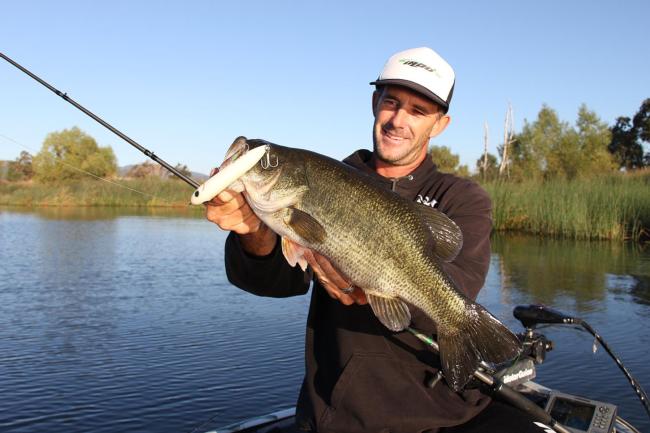 Why it works: Like the crankbaits, topwaters enable you to cover broad areas to quickly find active fish. The good thing here is that a topwater’s noisy surface display self-advertises and often alerts fish that may miss a subsurface presentation.
Why it works: Like the crankbaits, topwaters enable you to cover broad areas to quickly find active fish. The good thing here is that a topwater’s noisy surface display self-advertises and often alerts fish that may miss a subsurface presentation.
When to throw it: Nothing says “good morning” like a surface-shattering blowup, but California pro Matt Newman finds his best fall topwater action from about 10 a.m. until 2 p.m., particularly on flat calm days. Fish are really fired up when they can easily spot topside meals, so hang on.
“In that midday period when it’s glassy and still and nothing else is really working, topwaters can get the fish to react when (other baits) aren’t working because conditions are so still,” Newman said. “It seems that in the fall, the fish are more aggressive toward a topwater bait than they are toward something that’s really easy to get. The bigger fish don’t seem to be interested until you start pestering them by putting something over their heads. Topwaters get the bigger bites in the fall.”
Where to throw it: Cover such as docks, laydowns and grass edges never hurts, but your topwater tool is a great choice for searching open water. Newman likes Zara Spooks, Lunker Punkers and pencil poppers like The One (Paycheck Baits). He nabs a lot of schooling bass and big loners by walking or popping a topwater over points near creek mouths and deeper flats off channel edges.
Tips and Tactics: In dirtier water, Newman slows his retrieval rate, but keeps the action abrupt so the bait continues spitting and splashing while holding its ground. “If you’re confident (with your casting ability), skipping docks can be awesome. A spook under a dock can be killer.”
Hollow body frog
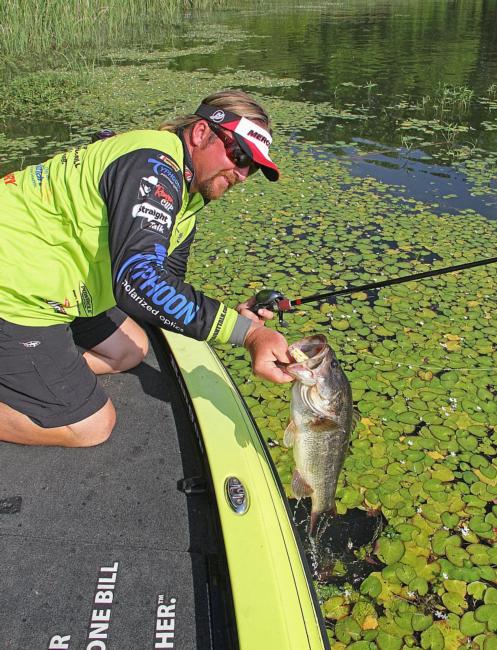 Why it works: Notwithstanding the inherent appeal of frog dinners, anything that imitates the splashing and dashing of shad at the surface attracts fall bass; and the amphibian imposters hit a homerun in that deal. Buzz toads – the soft plastic bodies with kicking legs – also work and it doesn’t hurt to keep one handy for presentation diversity.
Why it works: Notwithstanding the inherent appeal of frog dinners, anything that imitates the splashing and dashing of shad at the surface attracts fall bass; and the amphibian imposters hit a homerun in that deal. Buzz toads – the soft plastic bodies with kicking legs – also work and it doesn’t hurt to keep one handy for presentation diversity.
Straight Talk pro J.T. Kenney said that any color pattern works as long as the frog has a white belly. With bass keying on finfish forage, they’re mostly looking upward for pale undersides. Frogs that blend with the natural buffet earn more strikes.
When to throw it: Kenney said that brighter conditions offer bass the best visibility, but a frog’s commotion will attract attention even in dim light. Wind can help pile baitfish into predictable spots, but too much blow and the bass will have trouble spotting frogs.
“As far as temperature, until it gets really cold with those big fronts in December, a (slight) fall in water temperature won’t bother them – they’re still feeding,” Kenney said. “The day after a fall cold front, sometimes it does take until the afternoon of that first day to start.”
Where to throw it: From milfoil and hydrilla mats, to river grass, lily pads, and tule rafts, throw your frog toward the region’s dominant shallow water vegetation in 1 to 3 feet.
“A frog is something you can fish effectively and efficiently around vegetation,” Kenney said. “It’s not like trying to throw a topwater (plug) into little holes in the vegetation and as soon as you get out of that hole you get hung up. You can throw it up there in the grass and drag it across an open hole and let it sit there for a second. Half of the time, they come right through the grass.”
Tips and Tactics: Pull the legs out of a floating frog and insert extra weight and rattles to make more noise and weight down the backside so the bait floats nose-up. This allows you to fish the same frog like a popper with sharp downward strokes, or in a traditional walking presentation with a more relaxed twitching cadence. Also, if fish are short-striking, trim the legs to shrink the profile.
Spinnerbait
 Why it works: The opposite of “safety in numbers,” spinnerbaits leverage the attraction of what looks like a cluster of baitfish. Blades flash and vibrate, while skirts pulse and flare. To a bass, this looks like the chance to open wide and score multiple munchies. Two or more willow blades and white or chartreuse skirts help sell the package.
Why it works: The opposite of “safety in numbers,” spinnerbaits leverage the attraction of what looks like a cluster of baitfish. Blades flash and vibrate, while skirts pulse and flare. To a bass, this looks like the chance to open wide and score multiple munchies. Two or more willow blades and white or chartreuse skirts help sell the package.
“When that spinnerbait goes by, it just looks like a big ball of the baitfish that those bass are after,” said Texas pro Stephen Johnston.
When to throw it: From mid-September through much of December, Johnston always has two spinnerbaits on his deck – a 3/8-ounce “burner” for rapid casting to trigger reaction bites from schooling fish and a 1/2- to ¾-ounce model with larger blades for slow rolling when fish hunt deeper during overcast conditions.
Windy days delight spinnerbait anglers as blustery conditions push baitfish into tighter wads and bass start snapping at any flurry of activity they spot.
Where to throw it: Target docks, laydowns, isolated rocks or brush piles and the remaining edges of dying grass beds, but always remember to fish the windward edges. With docks, Johnston advises working all the way down the side, not just the face. Crashing waves stack wounded baitfish all along these lines and bass will feed where food avails.
Tips and Tactics: “On a bluebird, sunny day with light wind, that’s when I’ll burn that 3/8-ounce spinnerbait just below the surface on a 7:1 reel,” Johnston said. “It makes the fish react because you’re winding it so fast. Make a long cast and stick the tip of your rod in the water and wind as fast as you can wind. It will make it almost like a wakebait.
“A lot of times, especially if it’s cold, those fish will just come up and mouth at (the spinnerbait) and you’ll never feel a bite, but you’ll feel your blades quit turning. When you feel your blades quit turning, jerk.”
Jerkbaits
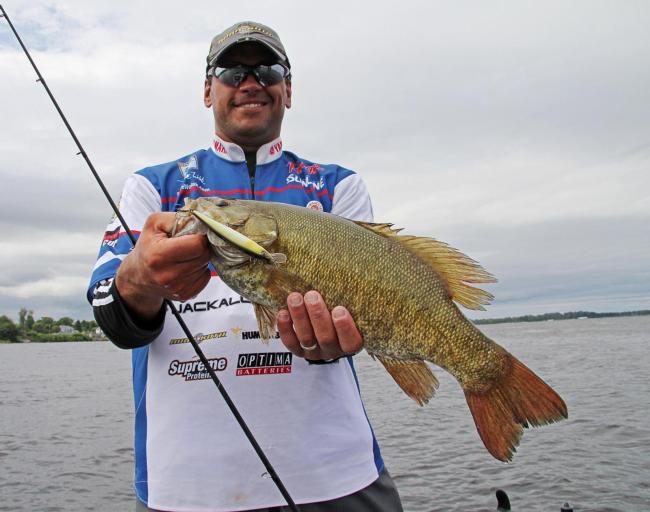 Why it works: When Ranger pro Dave Wolak spots largemouth schooling at the surface, a 115 Jackall Squad Minnow jerkbait is his top choice. A flashy, active bait that can quickly pause and hold vulnerably in the water column presents a tempting target for fall fish driven by feeding competition.
Why it works: When Ranger pro Dave Wolak spots largemouth schooling at the surface, a 115 Jackall Squad Minnow jerkbait is his top choice. A flashy, active bait that can quickly pause and hold vulnerably in the water column presents a tempting target for fall fish driven by feeding competition.
“I like the jerkbaits with three trebles because you just whip it out there into the school and even if they just slap at it, one of the trebles gets them,” Wolak said.
Also, Wolak points to the large aggregations of yellow perch in northern lakes and the cozy warming of shallow rocks as a good reason to move shoreward and throw a jerkbait for chunky smallmouth.
When to throw it: Wolak said the “Indian Summer” days – periods of pronounced fall warm-up – see bass becoming more active as their metabolism increases and the imminent reality of the next cold front hastens feeding urgency. On the other hand; rainy, windy prefrontal conditions are primetime for reaction baits like the jerks.
Where to throw it: Wolak said shallow water is most common for fall jerkbaits, but he won’t discount the deep water – especially if he spots balls of bait suspending off the bank. On the shoreline, isolated boulders and rocky fingers extending into the lake are good bets.
Tips and Tactics: Feathered rear trebles increase a jerkbait’s attraction, especially for indecisive schoolers. Wolak adds a 1/32- or 1/16-ounce drop-shot weight on the split ring of his jerkbait’s front hook to create a nose-down sinking posture that imitates a dying baitfish with a more realistic fall than you get with adhesive lead dots or strips.
Particular fall bass behavior will vary from lake to lake, so keep an open mind and don’t hesitate to experiment with bait colors and retrieves. The one constant, though, is appetite. Imitate indigenous baitfish and you’ll likely find action aplenty.